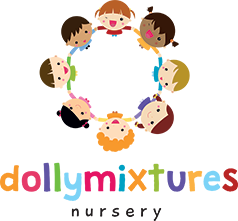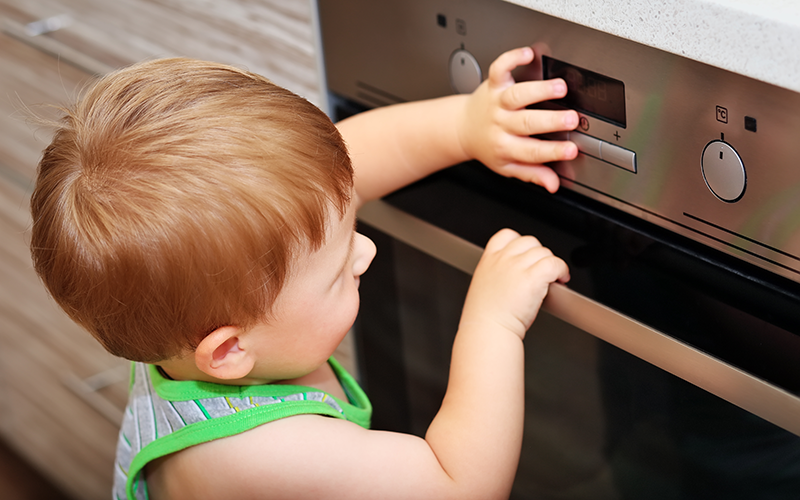Kitchen equipment, cooking and food and drink, are responsible for more than half of all burns and scalds. Follow these safety tips to keep your child out of harm’s way.
In the kitchen
- Keep children out of the kitchen, if possible, when you’re cooking
- Keep children away from the front of the oven – the door can get very hot
- Use a kettle with a short or flex and keep it well back from the edge of the kitchen work top
- Turn the saucepan handles towards the back of the cooker, and use the back rings where possible
- When cooking chips, use a thermostatically controlled electric deep fat fryer, or use oven chips instead
- Teach children over the age of seven to use kitchen appliances safely – like the toaster and microwave
- As children get older, they can also be taught to pour safely from the kettle and use the oven
Bottles
When warming babies’ bottles, avoid using the microwave – the milk may heat up unevenly leaving spots of very hot milk, which can scald a baby’s mouth. It is best to use a bottle warmer or a jug of hot water. After warming, shake the bottle well and test the temperature by placing a few drops of milk on the inside of your wrist. It should feel lukewarm, but not hot.
Hot drinks
Fifteen minutes after they have been made, hot drinks can still scald young children.
To guard against this:
- Never drink tea or coffee while you are holding a baby or young child
- Keep hot drinks out of reach of babies and toddlers
- Never pass hot drinks over the heads of babies or children
In the bathroom
- To avoid scalds from the hot tap, fit a thermostatic mixing valve (TMV)
- If you don’t have a TMV fitted, always put cold water in the bath first, then add hot water
- Whether you have a TMV or not, always test the bath water with your elbow before bathing your child – the water should feel neither hot or cold
In the bedroom
- A hair straightener can get as hot as an iron and can still seriously burn young skin eight minutes after being unplugged
- Store hair straighteners out of reach of children immediately after use – ideally use the specially designed cool bags provided with certain makes
Outdoors
- Keep children away from barbeques – even after you’ve finished using them
- Do not let your children near bonfires, fireworks or garden candles
- If your child gets a burn or a scald
First Aid
- Flood the injured area immediately with cool water for 10 to 15 minutes
- Once the burn has cooled, remove clothing from the injured area
- If material is sticking to the skin, don’t try to remove it – this needs to be done by a medical professional
- If the burn or scald starts to hurt again – flood again with cool water
- Don’t touch the injured area or burst any blisters – this can cause infection
- If possible, remove things like rings and watches from the injured area as it may swell
- Loosely cover the burn or scald with non-fluffy material to stop infection – cling film is ideal but don’t wrap it around, just lay it loosely on top
- Don’t put any creams, ointments, grease, antiseptic spray or plasters on the injury
- Get advice from a doctor or go to your local hospital’s accident and emergency department
If the burn or scald involves the face, hands, feet, joints or genitals, it should be seen by a doctor. Any burn or scald larger than a postage stamp, should also be seen by doctor.

